  |
| May 24, 2023 |
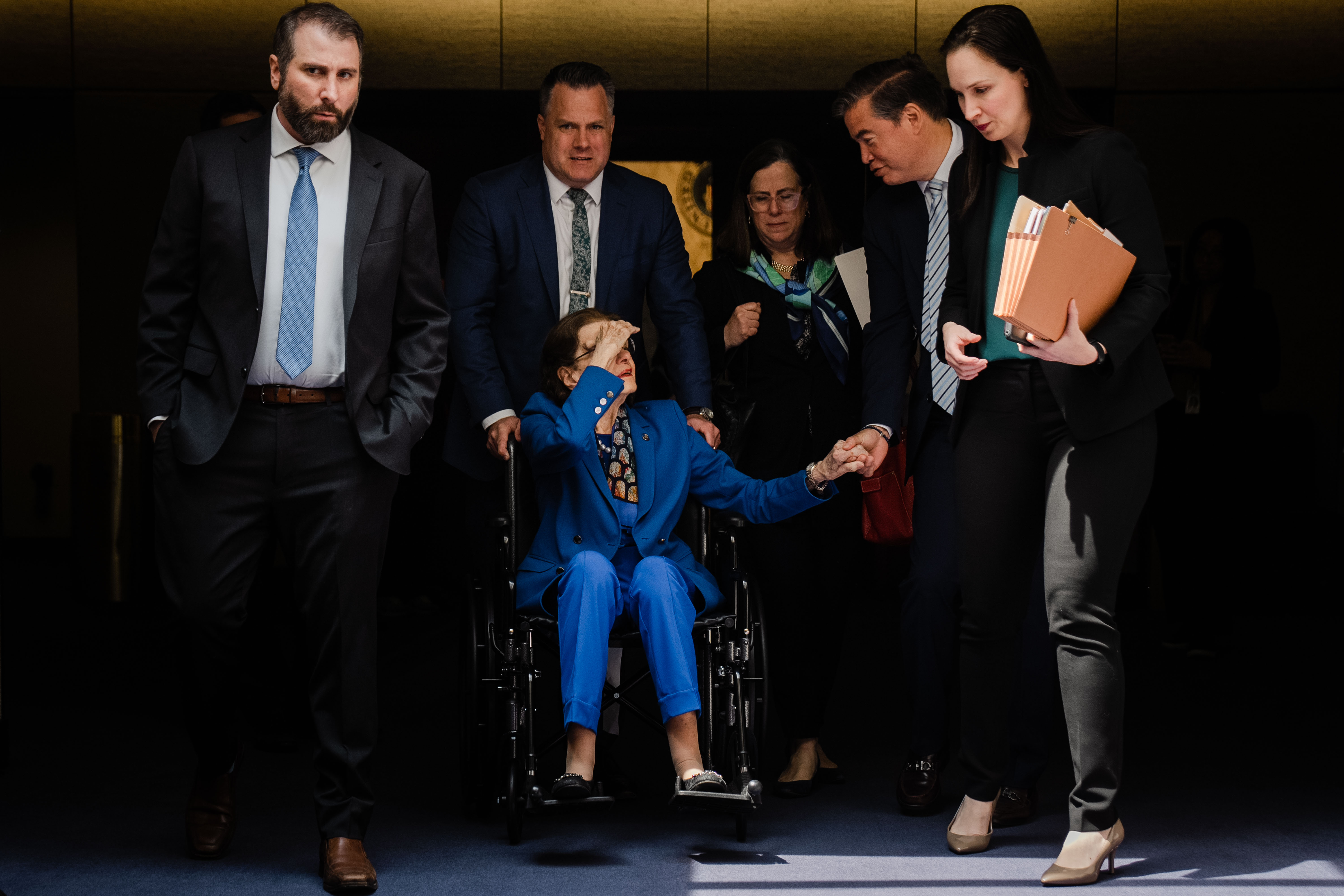 Aides form a protective bubble around Sen. Dianne Feinstein (D-Calif.) as she departs a Senate Judiciary Committee meeting on Capitol Hill. (Kent Nishimura / Los Angeles Times) Aides form a protective bubble around Sen. Dianne Feinstein (D-Calif.) as she departs a Senate Judiciary Committee meeting on Capitol Hill. (Kent Nishimura / Los Angeles Times) |
By Kent Nishimura Good morning, and welcome to the Essential California newsletter. It’s Wednesday, May 24. I’m Kent Nishimura, a staff photographer for the Los Angeles Times based out of Washington. I cover politics and national news. The exercise of photographing a U.S. senator is a bit like a game of cat and mouse. The photographers and reporters of the Capitol Hill press corps patiently mill about in case a person, most likely in a blue suit (or sometimes a hoodie) with a phalanx of staff, breezes by. That’s when we strike. In these brief moments, we create the postcards of history. But the Capitol complex is a maze — full of hideaways, tunnels, subways, staircases and doors opening into rooms that spill into an unfamiliar hallway. When members of Congress want to avoid reporters and photographers, they have a number of options. 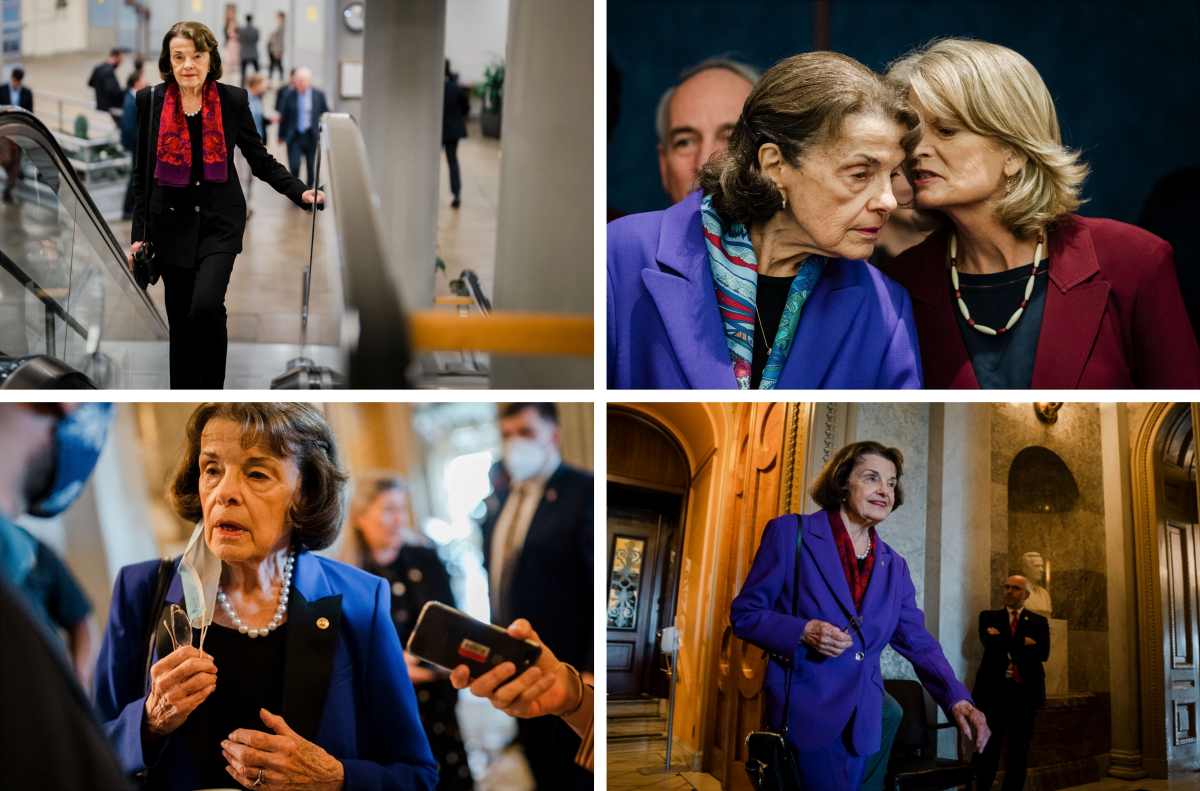 Clockwise from top left: Feinstein in 2022, heading to a vote; Sen. Lisa Murkowski (R-Alaska) whispers to Feinstein during a news conference on the Violence Against Women Act; Feinstein leaves the Senate Chamber following a vote in 2021; Feinstein stops to talk with reporters outside the Senate Chamber. (Kent Nishimura / Los Angeles Times) Since her recent return, Sen. Dianne Feinstein (D-Calif.) and her staff have used every trick in the book to stay out of sight and at a distance from the press. The 89-year-old had perhaps the most famous case of shingles in America and, as we reported last week, the complications she experienced included encephalitis, a swelling of the brain that can be debilitating and cause memory loss, among other effects. Her illness made confirming judges more challenging. Though Feinstein’s return meant Senate Democrats could reclaim their one-seat margin on the Senate Judiciary Committee, questions continue to swirl around her capacity to serve the Golden State’s 39 million residents. 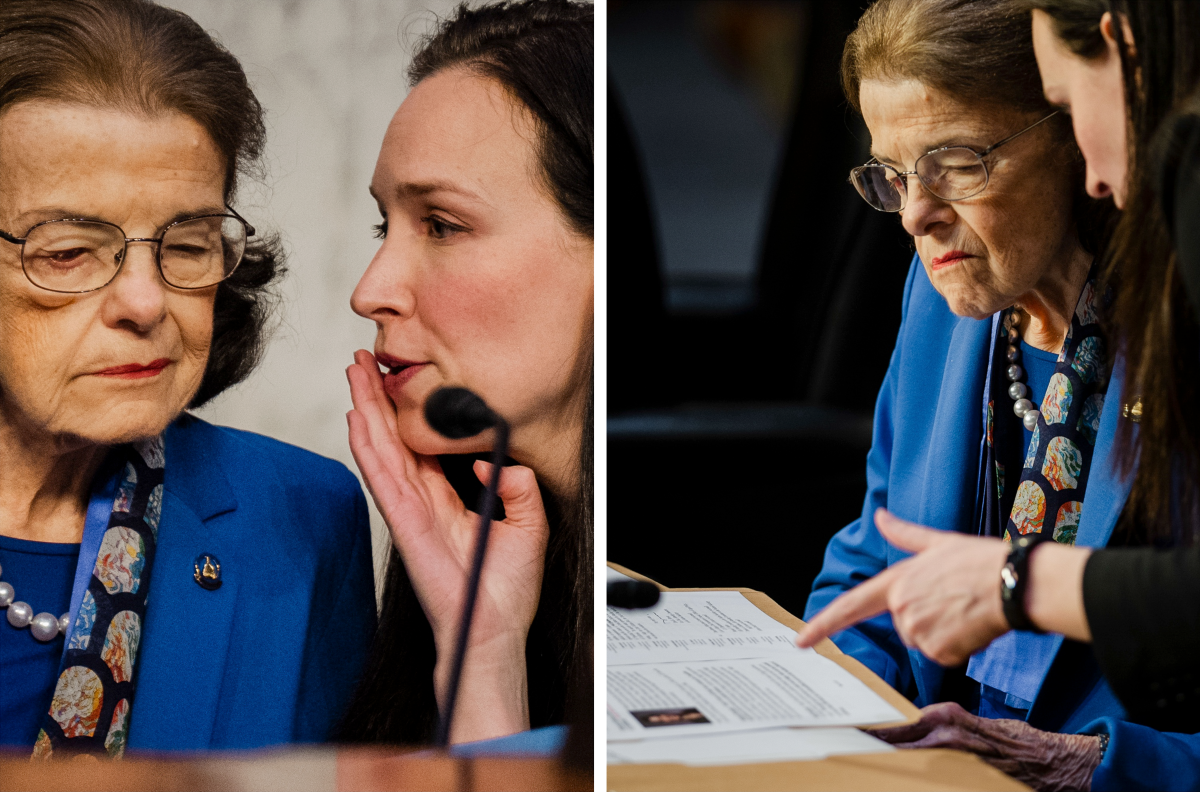 An aide assists Feinstein during the first Senate Judiciary Committee meeting following her return to Washington. (Kent Nishimura / Los Angeles Times) In committee meetings, her public remarks have been limited and she is always surrounded by staff. They also often form a human barrier between her and the press corps, with one staffer pushing her wheelchair while others shout at photographers to move out of the way. One member of this protective bubble is Nancy Corinne Prowda, Rep. Nancy Pelosi’s eldest daughter, who was first observed by the San Francisco Chronicle’s Shira Stein. Since Feinstein returned to Washington, I’ve found myself regularly watching as Prowda runs interference and shields the senator from reporters, sometimes placing herself between them. 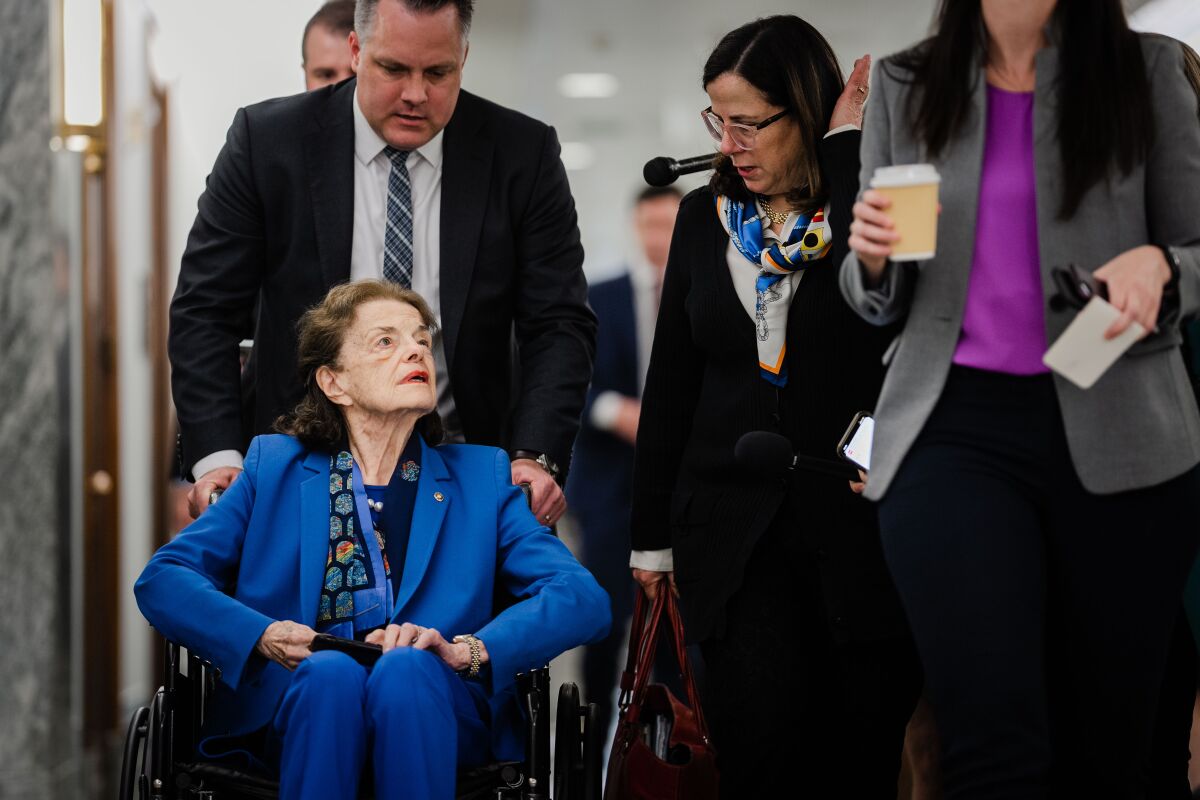 Nancy Corinne Prowda, second from right, daughter of Rep. Nancy Pelosi, runs interference on reporters asking Feinstein questions as she leaves a Senate Judiciary Committee meeting. (Kent Nishimura / Los Angeles Times) This drive to protect the senator isn’t entirely new. Rolling Stone reported that in recent years, Feinstein’s office has implemented a system to prevent the senator from ever walking around the Capitol on her own. It didn’t always work. Once, in 2021, I came across Feinstein leaving a hearing alone. I briefly chatted with her, asking her how she was doing. “You again,” she said to me with a smile. She stopped in the hallway and looked in each direction. She walked down the hall, paused, turned around and went in the opposite direction. A staffer soon ran out of the committee room and down the hall after the senator. 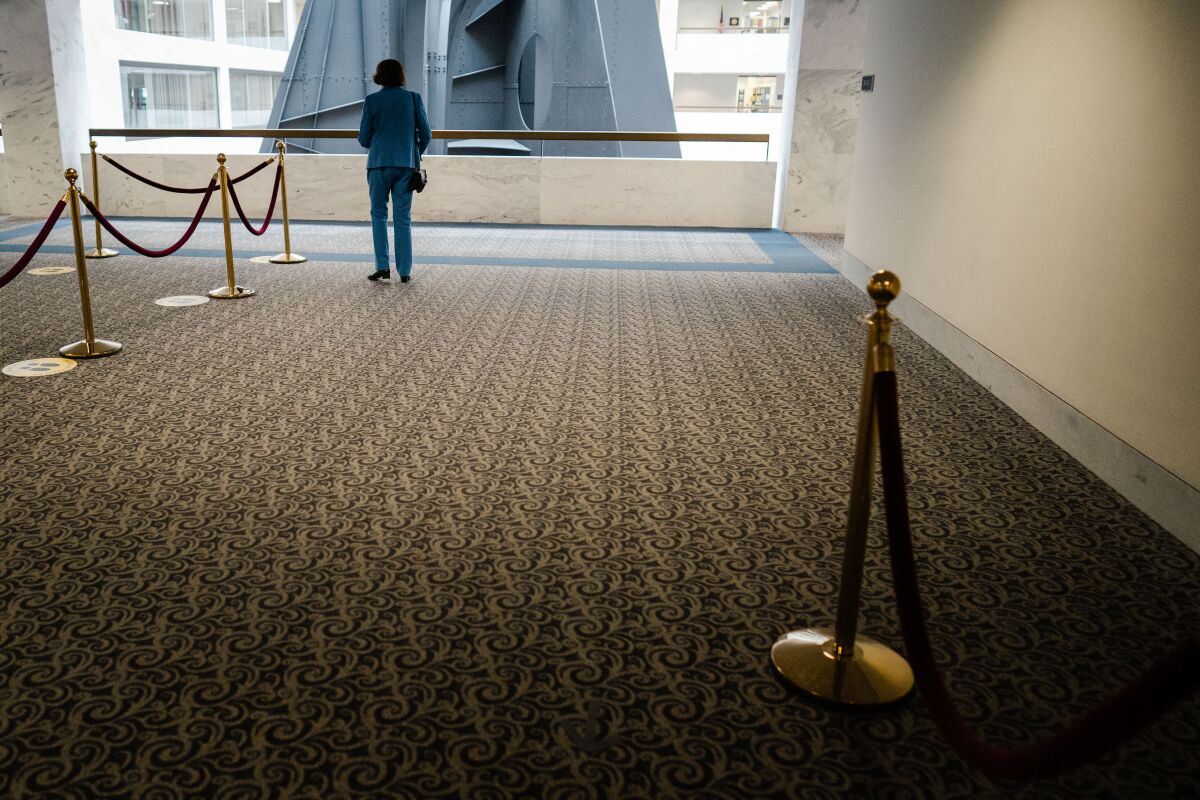 Feinstein leaves a committee hearing on Capitol Hill on April 14, 2021. (Kent Nishimura / Los Angeles Times) Her staff’s efforts to protect the former San Francisco mayor from scrutiny have intensified since her return, and ratcheted up further after my colleague Benjamin Oreskes caught up with Feinstein on her way back from a vote. During that conversation, she appeared to not recall she’d been absent from Congress for months due to her illness. These days, the senator is escorted on paths to and from the Senate chamber, where cameras aren’t allowed. Politico reported that her office requested that the Capitol Hill security apparatus keep the press as far from her as possible. 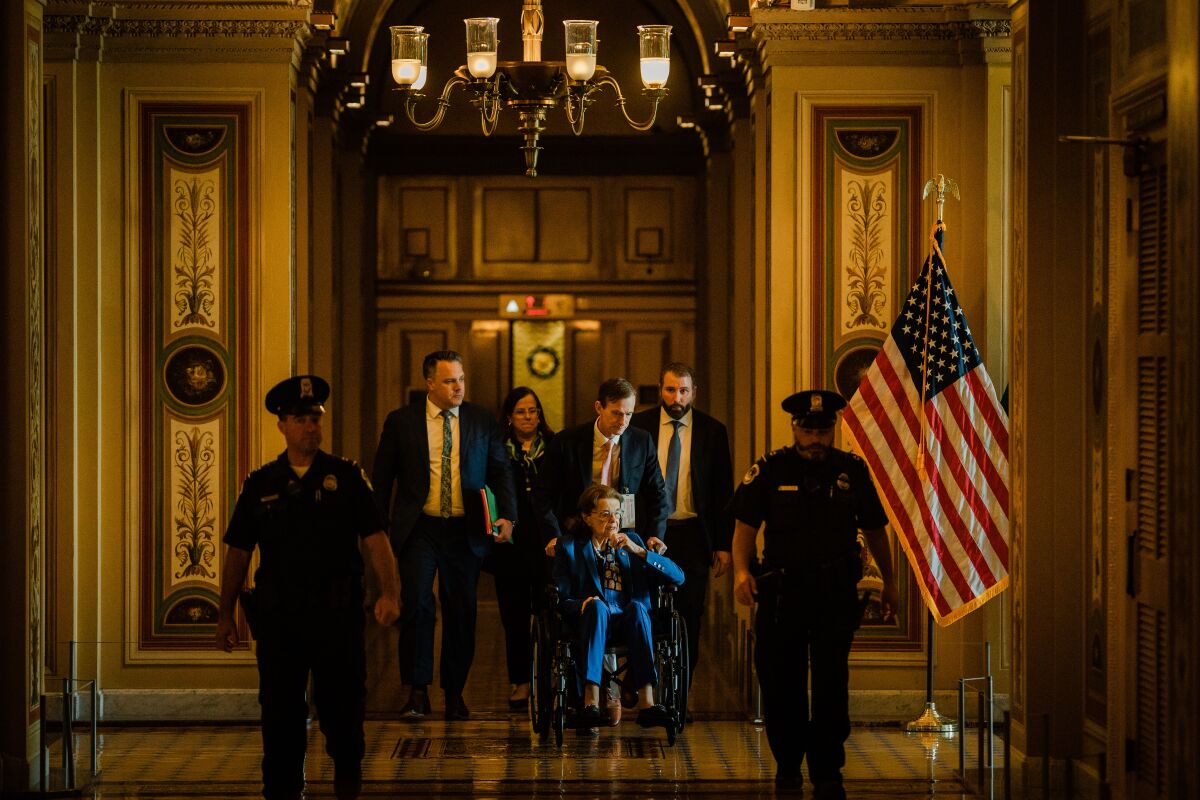 Feinstein leaves the Capitol after a vote. (Kent Nishimura / Los Angeles Times) For two days in a row last week, the Senate sergeant-at-arms office has said her arrival at the Capitol “is closed press,” shutting doors and using the Capitol police to chase journalists out of hallways and public spaces. This unprecedented act of restricting press freedom only raises more questions. I photographed the senator as a staff member tried to hide her wheelchair behind a pillar at a low-profile exit last week. A Capitol Police officer shouted at me to move back — despite already being 30 feet away from the senator. Feinstein waved as she was escorted to a waiting vehicle. 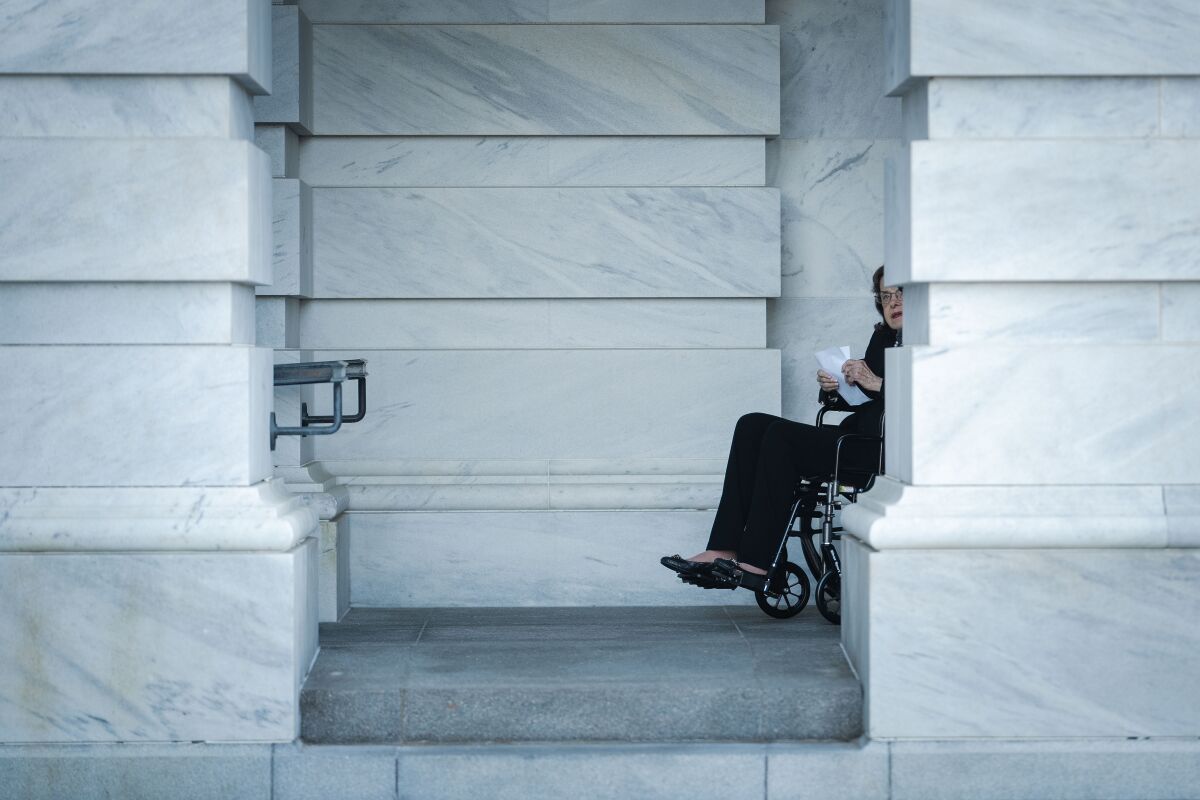 Feinstein is wheeled behind a pillar at a Capitol exit. (Kent Nishimura / Los Angeles Times) The following day, May 18, the senator arrived at the same entrance for a vote on the floor of the Senate. The Senate sergeant-at-arms’ office told members of the press they couldn’t document it. We were standing on a patch of grass on the Capitol Plaza that is open to the public. Feinstein declined to answer any questions. 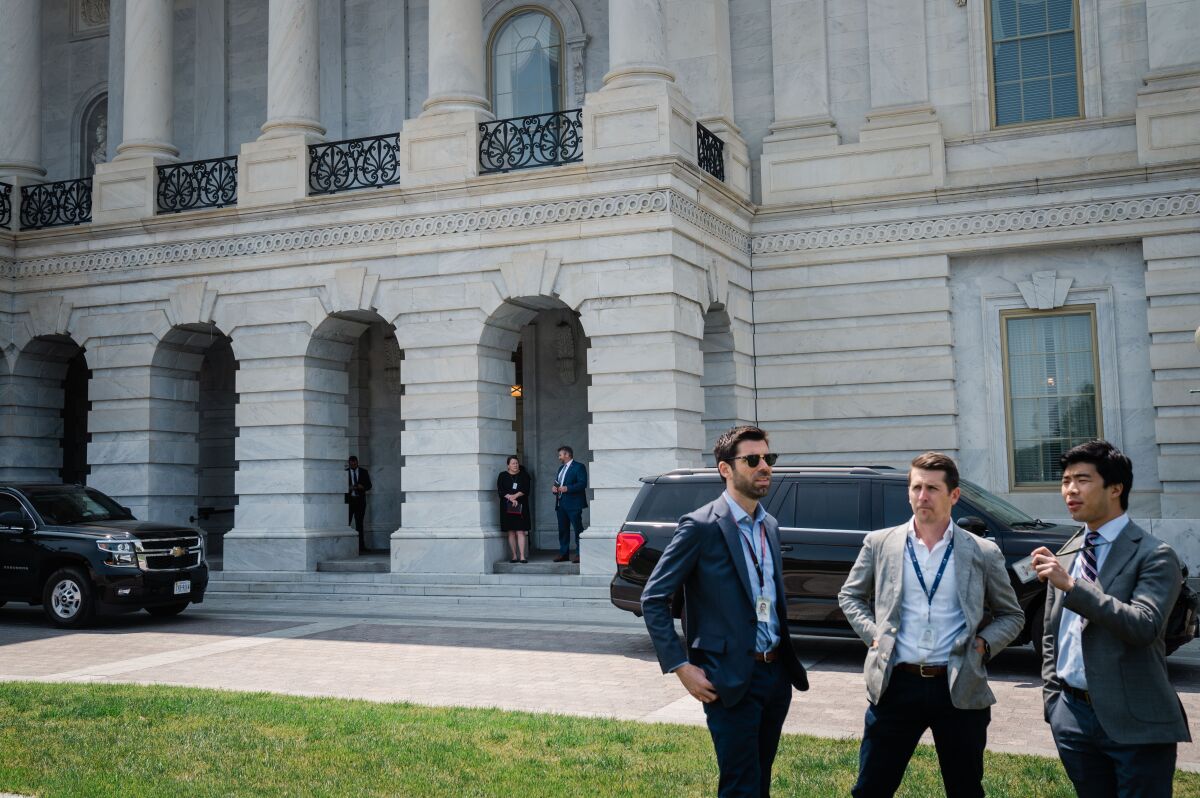 Members of the Capitol Hill press corps await the arrival of Feinstein while a staffer from the Senate sergeant-at-arms’ office keeps an eye on them from an archway. (Kent Nishimura / Los Angeles Times) Feinstein’s office denied that it was intentionally hiding her from the press. “Our office has not asked photographers to not take pictures of her in her wheelchair,” Feinstein spokesman Adam Russell said in a statement to The Times. “We did ask, and continue to ask for safety reasons, that photographers and reporters give her space, particularly when entering and exiting her vehicle.” As Feinstein continues the light schedule her office says is recommended by her doctor, the press has been respectfully but dutifully seeking out information and insights that can shed light on her ability to do her job. Letting the public see her through photos is a big part of that. Therein lies the importance of what journalists who report on our nation’s capital do: We mind the business of the people whose decisions change reality on the ground. |
No comments:
Post a Comment